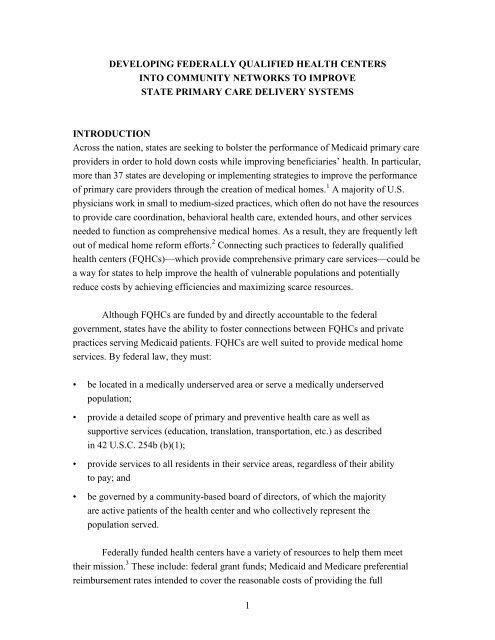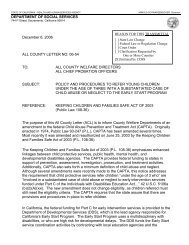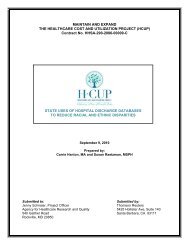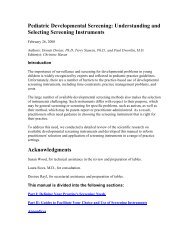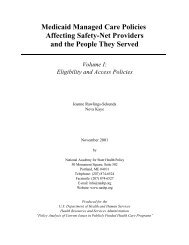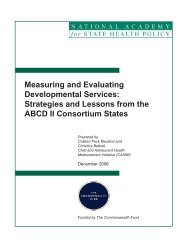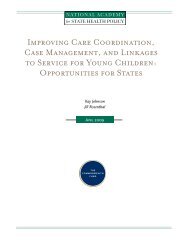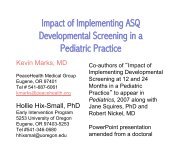Developing Federally Qualified Health Centers into Community ...
Developing Federally Qualified Health Centers into Community ...
Developing Federally Qualified Health Centers into Community ...
Create successful ePaper yourself
Turn your PDF publications into a flip-book with our unique Google optimized e-Paper software.
DEVELOPING FEDERALLY QUALIFIED HEALTH CENTERS<br />
INTO COMMUNITY NETWORKS TO IMPROVE<br />
STATE PRIMARY CARE DELIVERY SYSTEMS<br />
INTRODUCTION<br />
Across the nation, states are seeking to bolster the performance of Medicaid primary care<br />
providers in order to hold down costs while improving beneficiaries’ health. In particular,<br />
more than 37 states are developing or implementing strategies to improve the performance<br />
of primary care providers through the creation of medical homes. 1 A majority of U.S.<br />
physicians work in small to medium-sized practices, which often do not have the resources<br />
to provide care coordination, behavioral health care, extended hours, and other services<br />
needed to function as comprehensive medical homes. As a result, they are frequently left<br />
out of medical home reform efforts. 2 Connecting such practices to federally qualified<br />
health centers (FQHCs)—which provide comprehensive primary care services—could be<br />
a way for states to help improve the health of vulnerable populations and potentially<br />
reduce costs by achieving efficiencies and maximizing scarce resources.<br />
Although FQHCs are funded by and directly accountable to the federal<br />
government, states have the ability to foster connections between FQHCs and private<br />
practices serving Medicaid patients. FQHCs are well suited to provide medical home<br />
services. By federal law, they must:<br />
• be located in a medically underserved area or serve a medically underserved<br />
population;<br />
• provide a detailed scope of primary and preventive health care as well as<br />
supportive services (education, translation, transportation, etc.) as described<br />
in 42 U.S.C. 254b (b)(1);<br />
• provide services to all residents in their service areas, regardless of their ability<br />
to pay; and<br />
• be governed by a community-based board of directors, of which the majority<br />
are active patients of the health center and who collectively represent the<br />
population served.<br />
<strong>Federally</strong> funded health centers have a variety of resources to help them meet<br />
their mission. 3 These include: federal grant funds; Medicaid and Medicare preferential<br />
reimbursement rates intended to cover the reasonable costs of providing the full<br />
1


